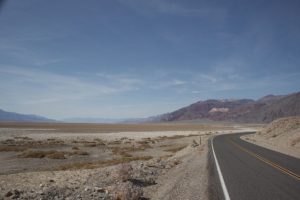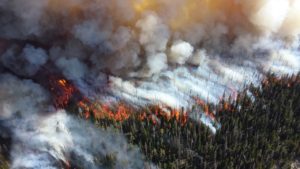Drought Conditions Persist in Parts of the U.S.
- NPG
- November 9, 2020
- NPG Commentary
- 1 Comment
November 10, 2020
Drought Conditions Persist in Parts of the U.S.
High Temperatures and No Rain Plaguing the West
With wildfires still raging nationwide, particularly in the West, researchers agree that drought is the major contributor. As the air cools and winter approaches, the National Oceanic and Atmospheric Administration issued a stark warning in their winter outlook, stating: “Drought conditions are expected to persist or worsen over large parts of the West during the December through February period, and expand farther east into the central United States.” There are many factors at play that are exacerbating this record-breaking drought, including high temperatures and dry conditions.
Lack of rain over an extended period causes a lot of damage. As explained on the Earth Observatory / NASA website: “The effects of ‘severe’ drought include stunted and browning crops, limited pasture yields, dust storms, reduced well water levels, and an increase in the number and severity of wildfires.” Such dry conditions are drying out the West, creating prime circumstances for wildfires to scorch the region.
 In August, Death Valley experienced what may be its highest temperature ever recorded! (There is some debate over the accuracy of a 1913 reading.) The near-constant heatwaves have intensified drought conditions. The Washington Post describes the effects of the drought in the West, saying: “Elevated temperatures have further helped to dry out the soil, exacerbating the drought and making fire weather conditions even more hazardous.” Heatwaves and droughts are becoming more and more common in the West.
In August, Death Valley experienced what may be its highest temperature ever recorded! (There is some debate over the accuracy of a 1913 reading.) The near-constant heatwaves have intensified drought conditions. The Washington Post describes the effects of the drought in the West, saying: “Elevated temperatures have further helped to dry out the soil, exacerbating the drought and making fire weather conditions even more hazardous.” Heatwaves and droughts are becoming more and more common in the West.
According to a recent study: “Climate change is at the heart of more frequent and intense dry and hot extremes in recent decades.” To further their point, researchers explain that the onset of the droughts and wildfires has changed over the years, noting: “The trigger for these hot-dry events is shifting. Looking back at the catastrophic Dust Bowl of the 1930s, they explain that the dust storms were driven by a lack of rainfall coupled with poor land management practices. In recent decades, however, dry-hot disasters are driven more often by excess heat than a lack of rainfall.”
NPG believes it is not too late to curb global warming. By working together to slow, halt, and eventually reverse population growth we can reduce the negative impact of carbon emissions and bring us closer to an environmentally safer, healthier, more stable society.
To see a map of U.S. wildfires, click here.
To explore more population issues, see our Forum paper series, particularly:
The True Environmental Disaster – The Silence on Our Growing Overpopulation – by Michael G. Hanauer
It’s Complicated: The Role of Land in Global Warming – by Edwin S. Rubenstein
MAKE A GENEROUS CONTRIBUTION TODAY!
| [WD_Button id=18412] |


Greeley Miklashek, MD
I saw an article recently indicating that the Siberian arctic temps have risen 3.5degC in the past 50 yrs. I saw a map in WAPO some months ago indicating that temps in the northern tier of the US have risen 3 degC over the past 100 yrs. So all this BS about an approaching 1.5 degC temp rise in the past 100 yrs. is just that, BS. The oceans are absorbing 232 Zetajoules of heat energy yearly as a buffer to otherwise far faster land temp rises. So, according to an international cmte. of climate scientists reported on the net, were it not for this buffering by our oceans, we’d be experiencing a 65 degF higher land temp in the US since 1965 (55 yrs.). Today, here in Madison, WI, we’d be sweltering in 125 degF heat, instead of the 60 deg F we actually will reach. Anyone who does not “believe” in global warming needs his/her temperature taken, as they surely have suffered a mental collapse. Stress R Us